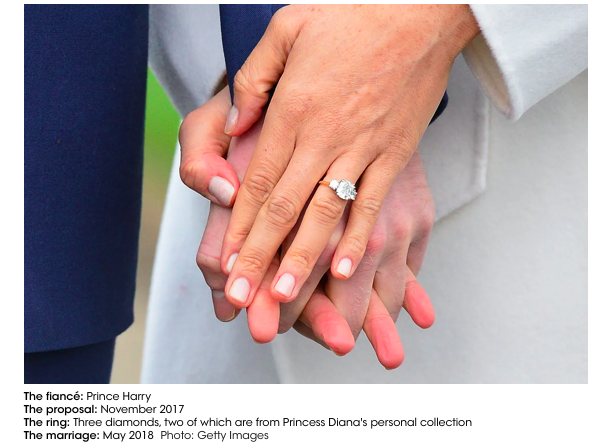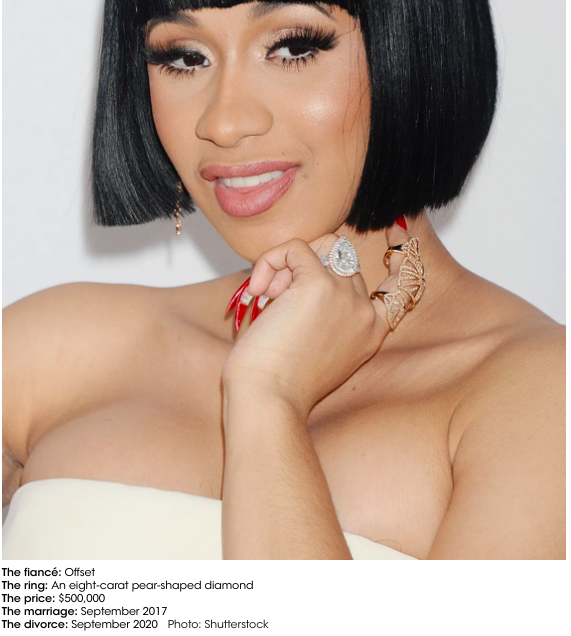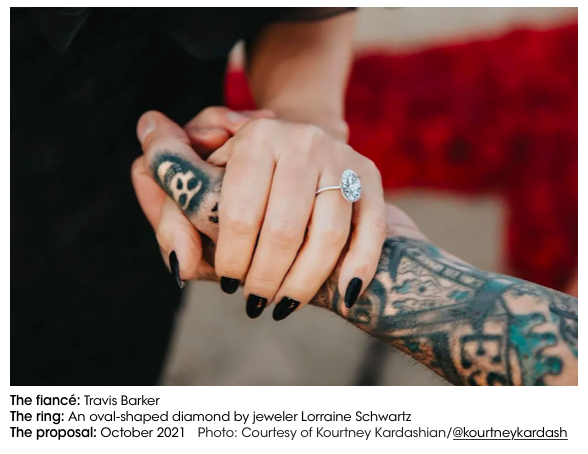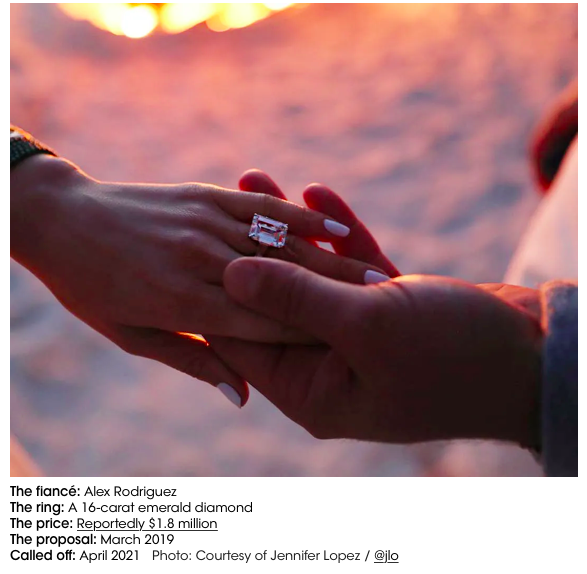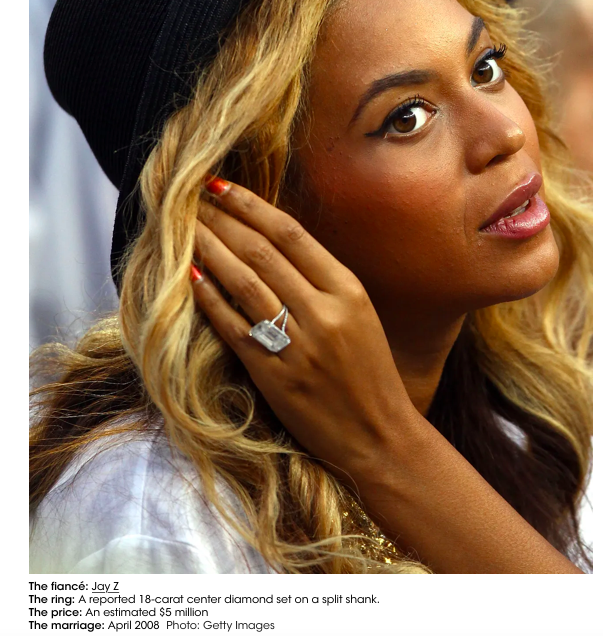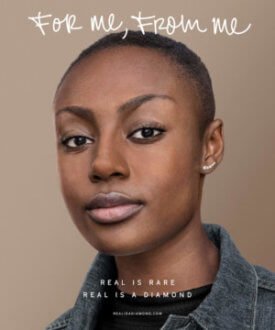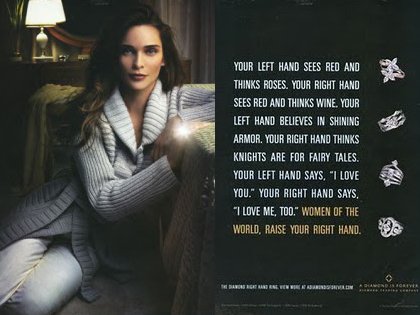YASMINE GHATTAS: Before World War II, only 10% of engagement rings had diamonds in them. After the Depression, no one was lining up to buy expensive goods. Americans had just been traumatized by one of the worst economic downturns ever and were stockpiling their money.
De Beers was quickly sinking in this economy, but they refused to sit idle. They had a stockpile of diamonds they needed to start selling, so they created a narrative around their diamonds. They wanted to equate diamonds with marriage — a pretty big ask. They started with simple celebrity marketing tactics. They would run stories of celebrities who wore diamonds, and more importantly, stories of those celebrities who had proposed with diamond rings. Fashion designers quickly started fawning over them and claiming diamonds as the new big trend.
BUSINESS INSIDER: In 1947, Ayer creative Frances Gerety suggested the slogan "A diamond is forever." Both she and her colleagues weren't too excited by it, but they eventually used it in a campaign the next year. It immediately clicked with the American people, who soon began associating the gemstone with a fitting symbol of a promise of eternal love, rather than just an extravagant luxury. "A diamond is forever" has appeared in every De Beers ad since 1948, and Ad Age named it the best slogan of the 20th century.
DEBORAH MARQUARDT, CHIEF MARKETING OFFICER OF DPA: The audience is given a glimpse into private ‘couple moments’ where the role of the diamond is intrinsic to the storyline, and is an expression of their love, their life together, and their commitment to each other.
YASMINE GHATTAS: De Beers’ marketing managed to convince American men that to marry their dream woman they had to buy her a big old shiny diamond ring. They were marketing geniuses using simple psychology to conflate a product with an end goal. But for some reason, they weren’t able to do the same for women. In the 1980s, in an attempt to expand their audience, they started targeting women. Specifically, calling on women to buy their men diamonds.
5. Assuming you plan to get married some day, do you expect to either 1) receive a diamond engagement ring or 2) buy a diamond engagement ring? Why or why not?
ANDERSON & WEBB: So much has been written on diamonds, how to judge and buy, with issues of colour, cut and clarity, that it's hard to add anything new. So here’s a word for an unsung diamond hero, which rarely gets a look in the West, the polki diamond. Polkis are a prominent feature of Indian jewellery and especially wedding jewellery, where enormous stones are set in the most fabulously opulent of jewellery. Polkis are lower grade diamonds, almost of industrial quality for drills etc, but are sliced lengthways to form great swathes of gem, often with blacked oxidised finishes and foil underlay. So a very different look, at a fraction of the price of a polished stone, worth checking out to see if this is something you’d like to add to your jewellery box – I have!
TESS PETAK for Brides: So after searching for months to find the perfect ring without success, Vaughan decided to take matters into his own hands. He commissioned Kay Jewelry to help design a same-sex engagement and wedding band all in one. Vaughan had a major part in designing this ring (the initial sketch was done on his Poke bowl to-go container!). Still, it's important to note that this historic piece of jewelry marks one of the first same-sex engagement/wedding bands offerings by a major retailer.
BALLARD & BALLARD: “Men want to be on the foreground of a growing trend” -Unknown
Most people picture big, elaborate, sparkling, diamond rings when they picture an engagement. Most people also picture said ring on the bride to be’s ring finger forever changing her life for the better. Now what if we told you there was a ring just as elaborate or stunning sitting on the groom to be’s ring finger as well. In today’s changing world the topic of men wearing engagement rings has been brought to the forefront, and the numbers don’t lie. In recent years when surveyed, as many as 17% of men said they wouldn’t mind wearing an engagement ring. For some it might be just as flashy as their soon to be bride’s, but for others it’s something toned down from what their bride is flashing. This trend is going nowhere but up as men all across the world are wanting to be more involved in the wedding aspect of their lives.
THE PLUMB CLUB: Women are not only buying jewelry for themselves, they are involved in a majority of the engagement ring purchases and greatly influence gifting, says Neil Shah, a principal of Shah Luxury in New York City. He says the dramatic rise in customization services that his company has experienced in recent years is a testament to the significant increase in women participating in the jewelry buying process, because they know what they want. “And, we should be listening.”
SUSANNE RAMIREZ DE ARELLANO: Beyoncé is the fourth woman and first Black woman to wear the famous gem — unearthed by De Beers in South Africa in 1877. The so-called Tiffany diamond was previously worn by Audrey Hepburn, Lady Gaga and the American socialite Mary Whitehouse, the first time it was paraded in public, at a Tiffany Ball in 1957. Tiffany & Co., which was recently acquired by the fashion conglomerate LVMH, hopes the campaign (together with a separate effort dubbed “Not Your Mother’s Tiffany”) will freshen and update Tiffany’s image for a new generation of luxury consumers. …The problem is the backstory of the yellow Tiffany diamond. Found in the Kimberley diamond mines in South Africa (under British rule) in 1877 as a 287.42 carat rough stone, it was later purchased by Charles Lewis Tiffany in 1878 for $18,000. Its estimated worth today is $30 million.






